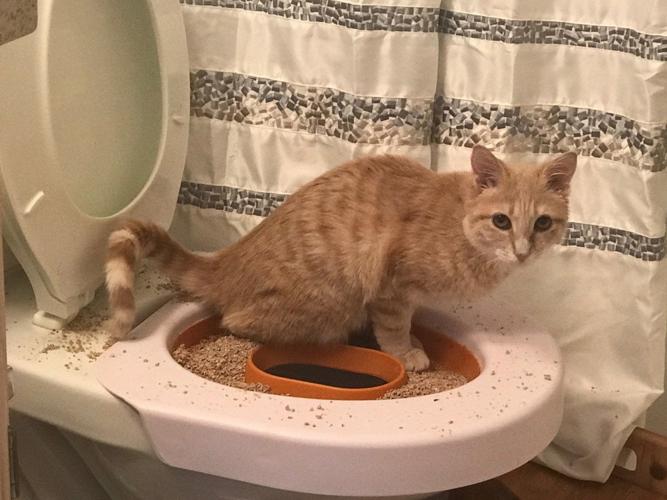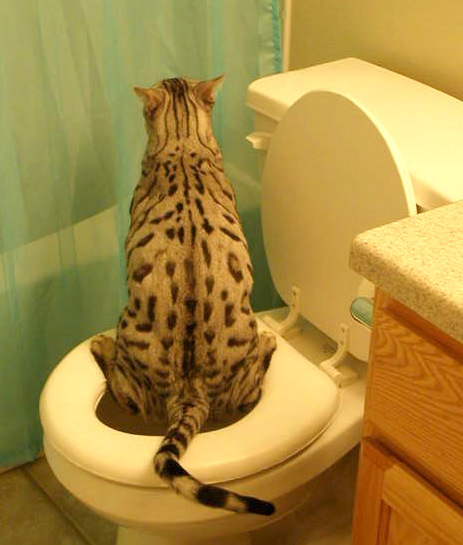Prevent Plumbing Problems: Don't Flush Cat Poop Down Your Toilet - Professional Guidance
Prevent Plumbing Problems: Don't Flush Cat Poop Down Your Toilet - Professional Guidance
Blog Article
Are you searching for help and advice concerning Can You Flush Cat Poo or Litter Down the Toilet??

Intro
As cat owners, it's vital to be mindful of how we get rid of our feline close friends' waste. While it might appear convenient to purge pet cat poop down the commode, this technique can have destructive effects for both the setting and human wellness.
Alternatives to Flushing
The good news is, there are much safer and more accountable ways to deal with feline poop. Take into consideration the following alternatives:
1. Scoop and Dispose in Trash
The most typical approach of throwing away cat poop is to scoop it right into a biodegradable bag and throw it in the garbage. Make certain to make use of a dedicated trash inside story and take care of the waste promptly.
2. Usage Biodegradable Litter
Go with eco-friendly pet cat clutter made from products such as corn or wheat. These trashes are environmentally friendly and can be safely disposed of in the garbage.
3. Bury in the Yard
If you have a yard, consider hiding feline waste in a designated location far from vegetable yards and water sources. Be sure to dig deep adequate to avoid contamination of groundwater.
4. Mount a Pet Waste Disposal System
Purchase an animal garbage disposal system particularly made for feline waste. These systems make use of enzymes to break down the waste, decreasing smell and environmental influence.
Health Risks
Along with ecological concerns, purging pet cat waste can also present health dangers to people. Pet cat feces may include Toxoplasma gondii, a bloodsucker that can create toxoplasmosis-- a possibly severe disease, especially for expectant females and people with weakened immune systems.
Environmental Impact
Flushing feline poop introduces dangerous virus and bloodsuckers right into the water system, posturing a substantial threat to water ecological communities. These impurities can negatively influence aquatic life and compromise water top quality.
Final thought
Liable family pet possession extends past giving food and sanctuary-- it additionally entails appropriate waste management. By avoiding purging cat poop down the bathroom and choosing alternative disposal techniques, we can reduce our ecological footprint and shield human health.
Why Can’t I Flush Cat Poop?
It Spreads a Parasite
Cats are frequently infected with a parasite called toxoplasma gondii. The parasite causes an infection called toxoplasmosis. It is usually harmless to cats. The parasite only uses cat poop as a host for its eggs. Otherwise, the cat’s immune system usually keeps the infection at low enough levels to maintain its own health. But it does not stop the develop of eggs. These eggs are tiny and surprisingly tough. They may survive for a year before they begin to grow. But that’s the problem.
Our wastewater system is not designed to deal with toxoplasmosis eggs. Instead, most eggs will flush from your toilet into sewers and wastewater management plants. After the sewage is treated for many other harmful things in it, it is typically released into local rivers, lakes, or oceans. Here, the toxoplasmosis eggs can find new hosts, including starfish, crabs, otters, and many other wildlife. For many, this is a significant risk to their health. Toxoplasmosis can also end up infecting water sources that are important for agriculture, which means our deer, pigs, and sheep can get infected too.
Is There Risk to Humans?
There can be a risk to human life from flushing cat poop down the toilet. If you do so, the parasites from your cat’s poop can end up in shellfish, game animals, or livestock. If this meat is then served raw or undercooked, the people who eat it can get sick.
In fact, according to the CDC, 40 million people in the United States are infected with toxoplasma gondii. They get it from exposure to infected seafood, or from some kind of cat poop contamination, like drinking from a stream that is contaminated or touching anything that has come into contact with cat poop. That includes just cleaning a cat litter box.
Most people who get infected with these parasites will not develop any symptoms. However, for pregnant women or for those with compromised immune systems, the parasite can cause severe health problems.
How to Handle Cat Poop
The best way to handle cat poop is actually to clean the box more often. The eggs that the parasite sheds will not become active until one to five days after the cat poops. That means that if you clean daily, you’re much less likely to come into direct contact with infectious eggs.
That said, always dispose of cat poop in the garbage and not down the toilet. Wash your hands before and after you clean the litter box, and bring the bag of poop right outside to your garbage bins.
https://trenchlesssolutionsusa.com/why-cant-i-flush-cat-poop/

We were introduced to that article about How to Dispose of Cat Poop and Litter Without Plastic Bags through someone on our other site. Are you aware of anybody else who is serious about the subject? Please feel free to promote it. Kudos for your time. Come back soon.
Request An Estimate Report this page